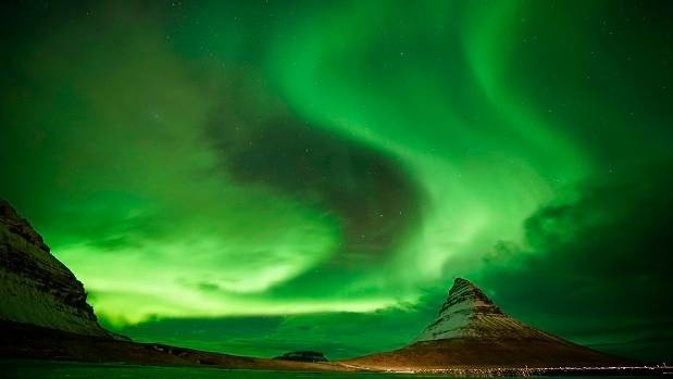
Earth's magnetic field is what allows us to exist. It deflects harmful radiation. It keeps our water and atmosphere in place. But now it's acting up — and nobody knows why.
Planet Earth is alive. Deep beneath its skin, its life blood — rivers of molten iron — pulse around its core. And this mobile iron is what generates the magnetic field that causes auroras — and keeps us alive.
But, according to the science journal Nature, something strange is going on deep down below.
It's causing the magnetic North Pole to 'skitter' away from Canada, towards Siberia.
"The magnetic pole is moving so quickly that it has forced the world's geomagnetism experts into a rare move," Nature reports.
/arc-anglerfish-syd-prod-nzme.s3.amazonaws.com/public/43QIFYCEC5GL3KIJ56QHAA5I3U.jpg)
Graphic via Science Journal Nature. Photo / Supplied
On January 30 (delayed due to the US Government shutdown), the World Magnetic Model — which governs modern navigation systems — is due to undergo an urgent update.
This model is a vital component of systems ranging from geopositioning systems used to navigate ships through to smartphone trackers and maps.
The current model was expected to be valid until 2020. But the magnetic pole began to shift so quickly, it was realised in 2018 that the model had to be fixed — now.
"They realised that it was so inaccurate that it was about to exceed the acceptable (safe) limit for navigational errors," Nature reports.
FICKLE TIDES
Every year, geophysicists from the US National Oceanic and Atmospheric Administration (NOAA) and the British Geological Survey do a check on how the Earth's magnetic field is varying.
This is necessary as the liquid iron churning in the Earth's core does not move in a consistent manner.
"In 2016, for instance, part of the magnetic field temporarily accelerated deep under northern South America and the eastern Pacific Ocean," Nature reports.
This shift was captured by satellites.
/arc-anglerfish-syd-prod-nzme.s3.amazonaws.com/public/UXMZ3UG6C5A3DLGJBVYQLP7XGA.jpg)
Earth has lines of magnetic force looping from North Pole to South Pole, creating Earth's protective magnetosphere. Photo / Supplied
But the movement of the north magnetic pole has been the object of study since 1831. Initially, it was tracked moving into the Arctic Ocean at a rate of about 15km each year. But, since the mid 1990s, it has picked up speed.
It's now shifting at a rate of about 55km a year.
But another recent study has revealed the Earth's magnetic field has been acting up now for some 1000 years.
CORE OF THE MATTER
Why the magnetic field is shifting so dramatically is unknown.
"Geomagnetic pulses, like the one that happened in 2016, might be traced back to 'hydromagnetic' waves arising from deep in the core," Nature reports. "And the fast motion of the north magnetic pole could be linked to a high-speed jet of liquid iron beneath Canada".
This fast-flowing molten river appears to be weakening the magnetic influence of the iron core beneath North America.
/arc-anglerfish-syd-prod-nzme.s3.amazonaws.com/public/366633AUGVGUBCMNUX4UWKTTEI.jpg)
Scientists in recent years have predicted that Earth's magnetic field could shift in which the magnetic south pole would become magnetic north, and vice versa. Photo / Supplied
"The location of the north magnetic pole appears to be governed by two large-scale patches of magnetic field, one beneath Canada and one beneath Siberia," Phil Livermore of the University of Leeds told an American Geophysical Union meeting. "The Siberian patch is winning the competition."
And, as global warming opens up more shipping lanes to the north of Russia and Canada, this presents a potentially deadly problem.
"The fact that the pole is going fast makes this region more prone to large errors," says Arnaud Chulliat, a geomagnetist at the University of Colorado Boulder and NOAA.
Take your Radio, Podcasts and Music with you









